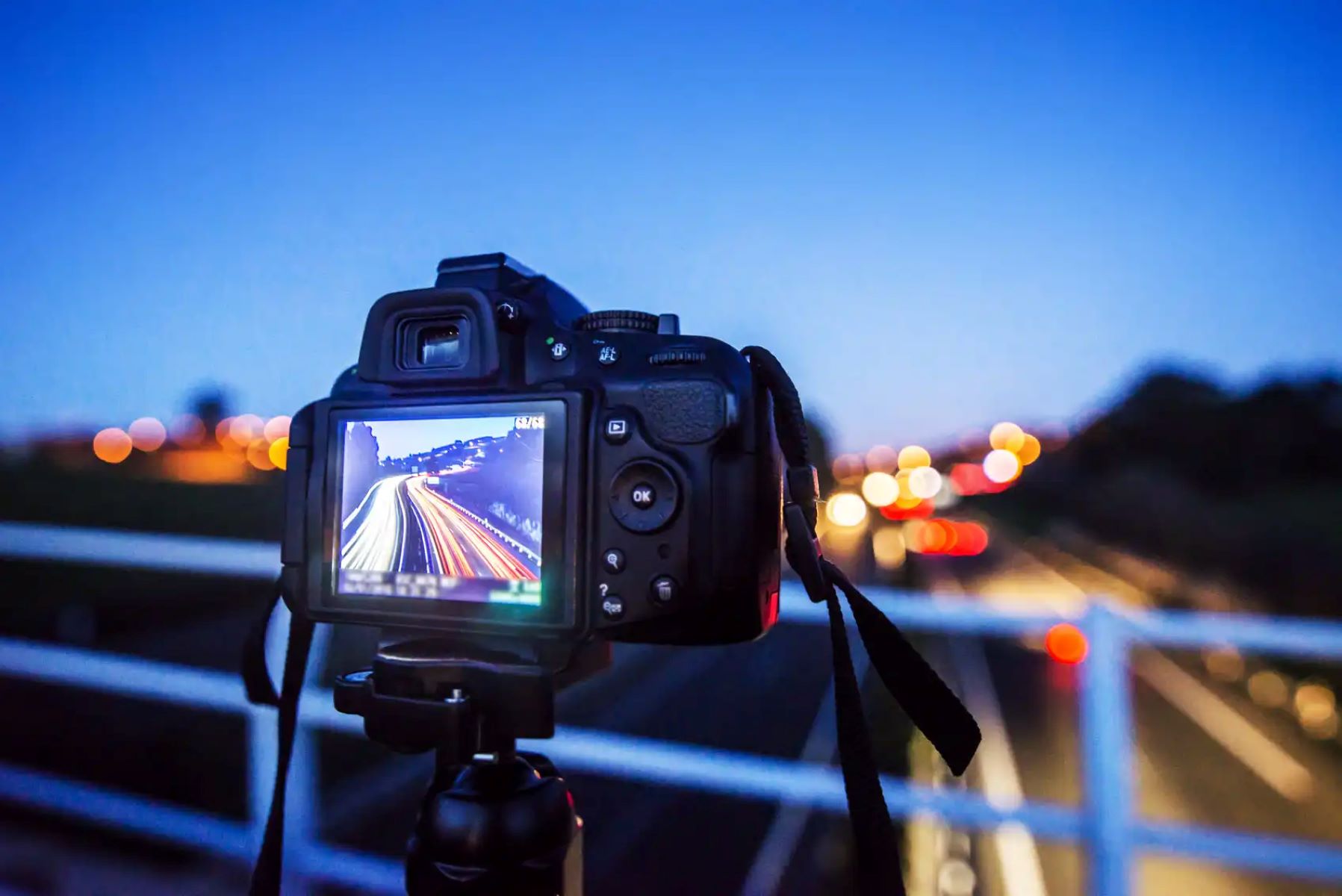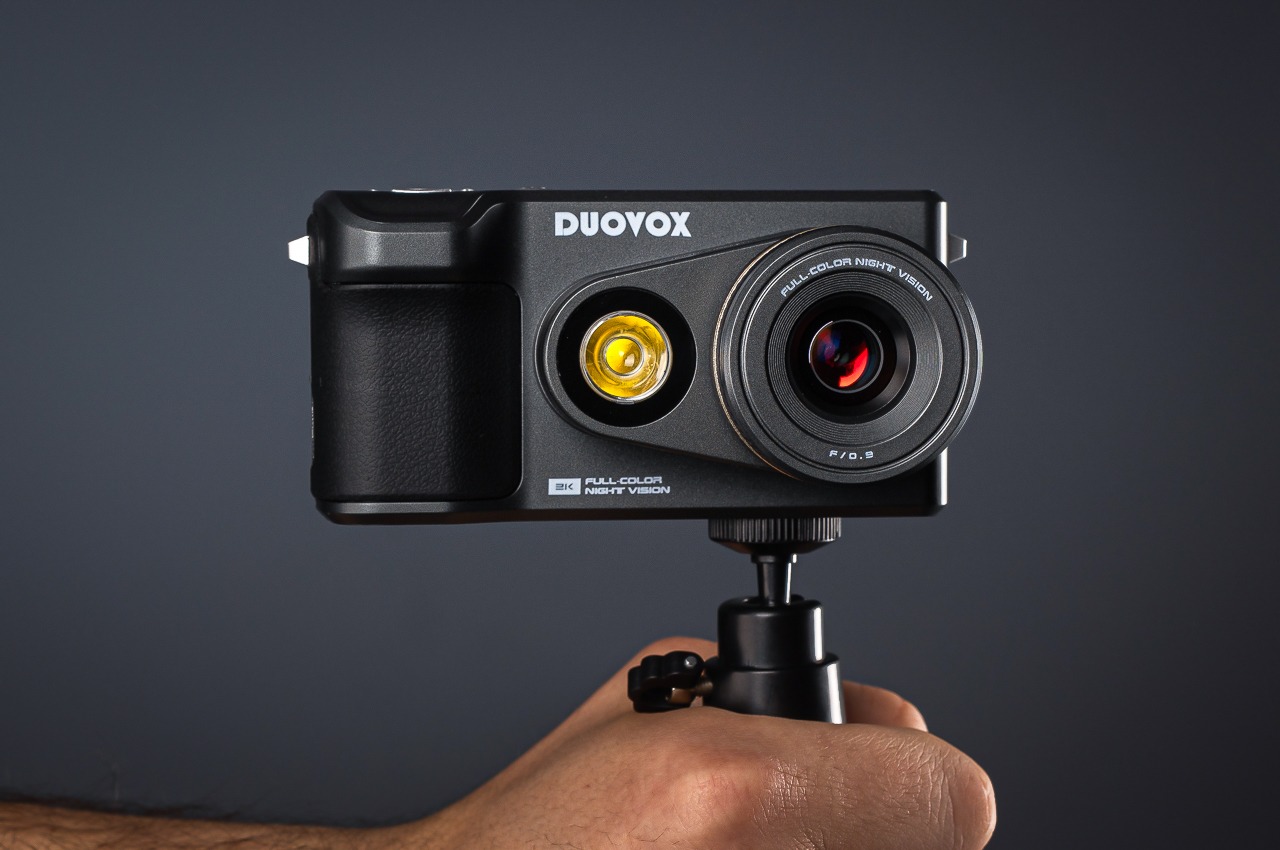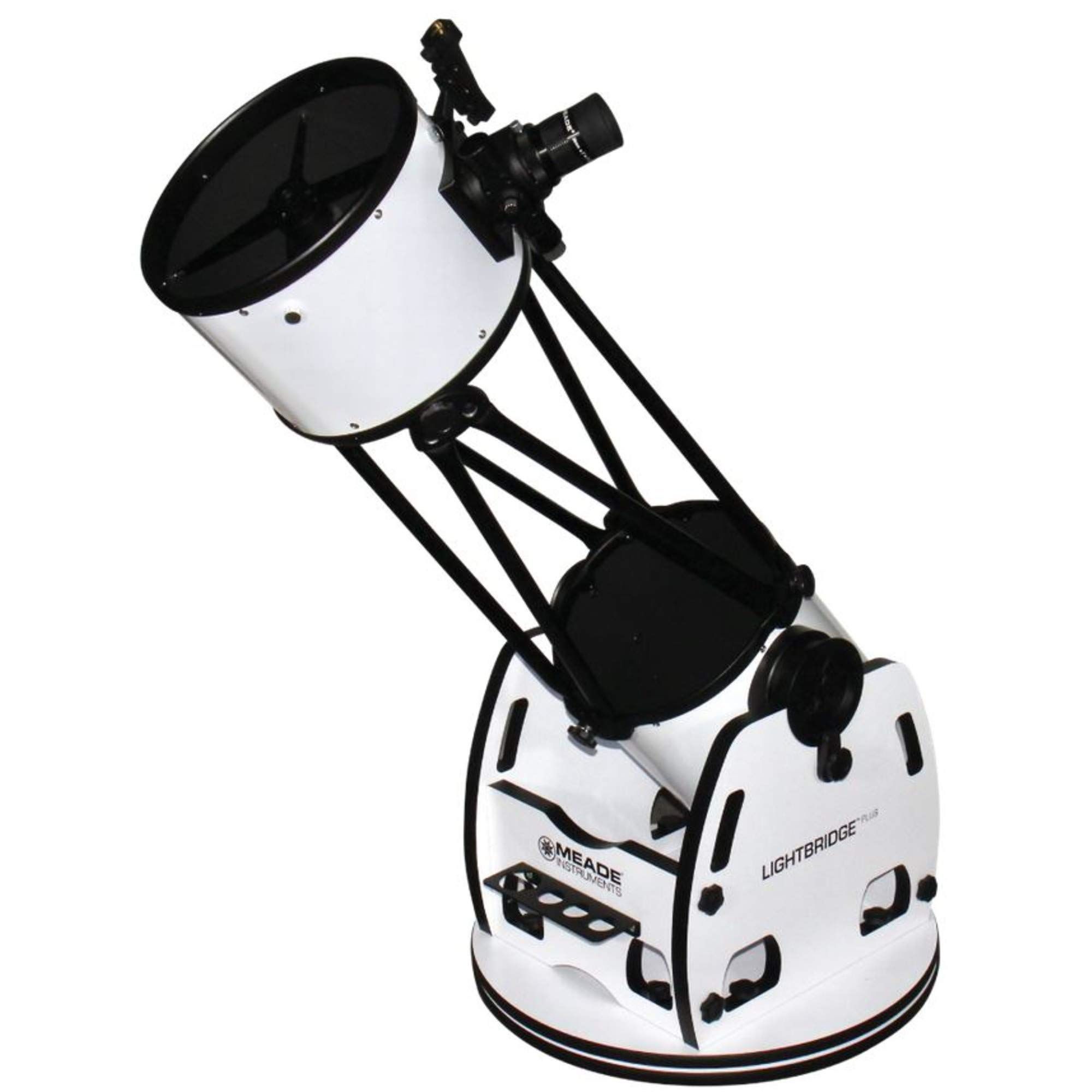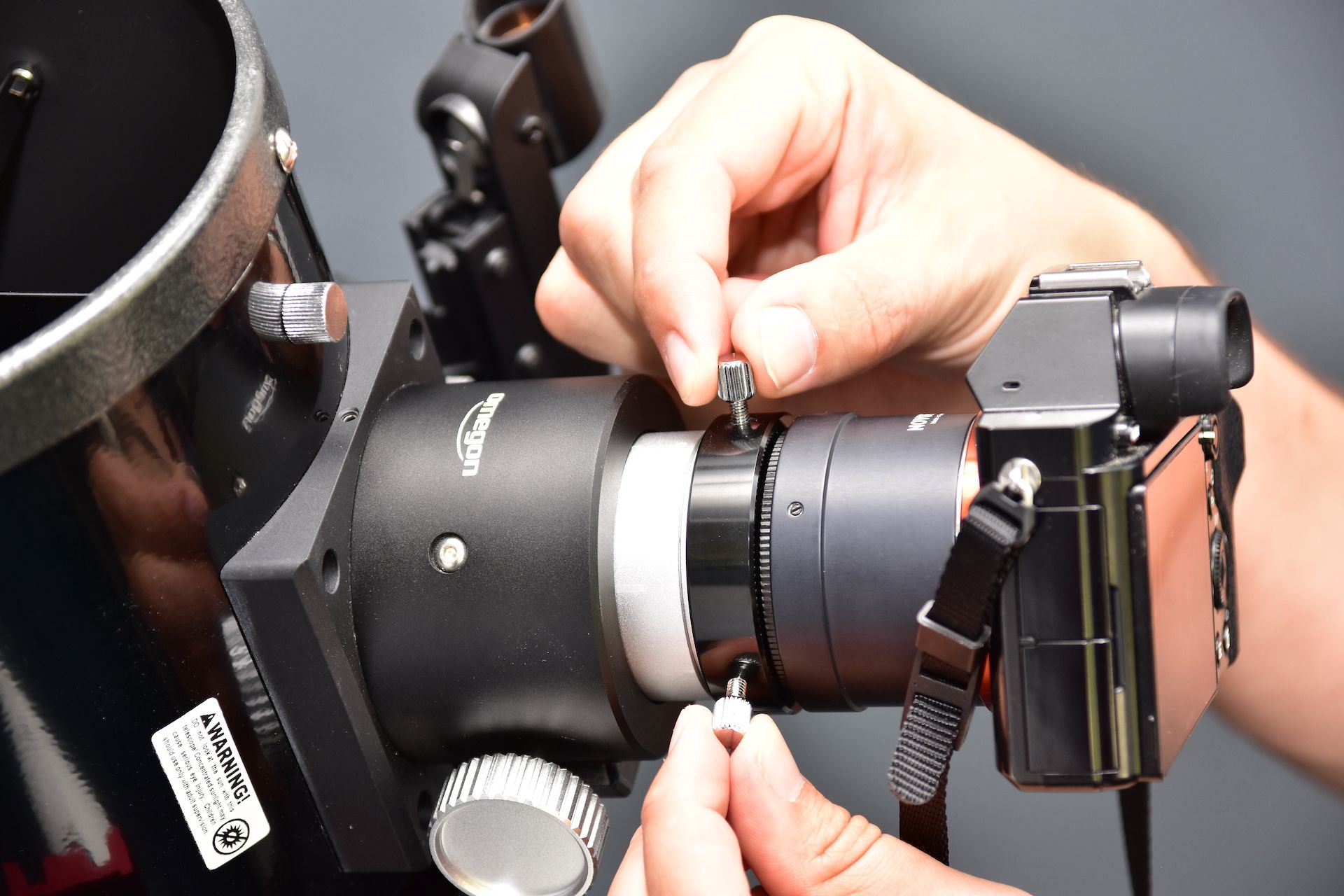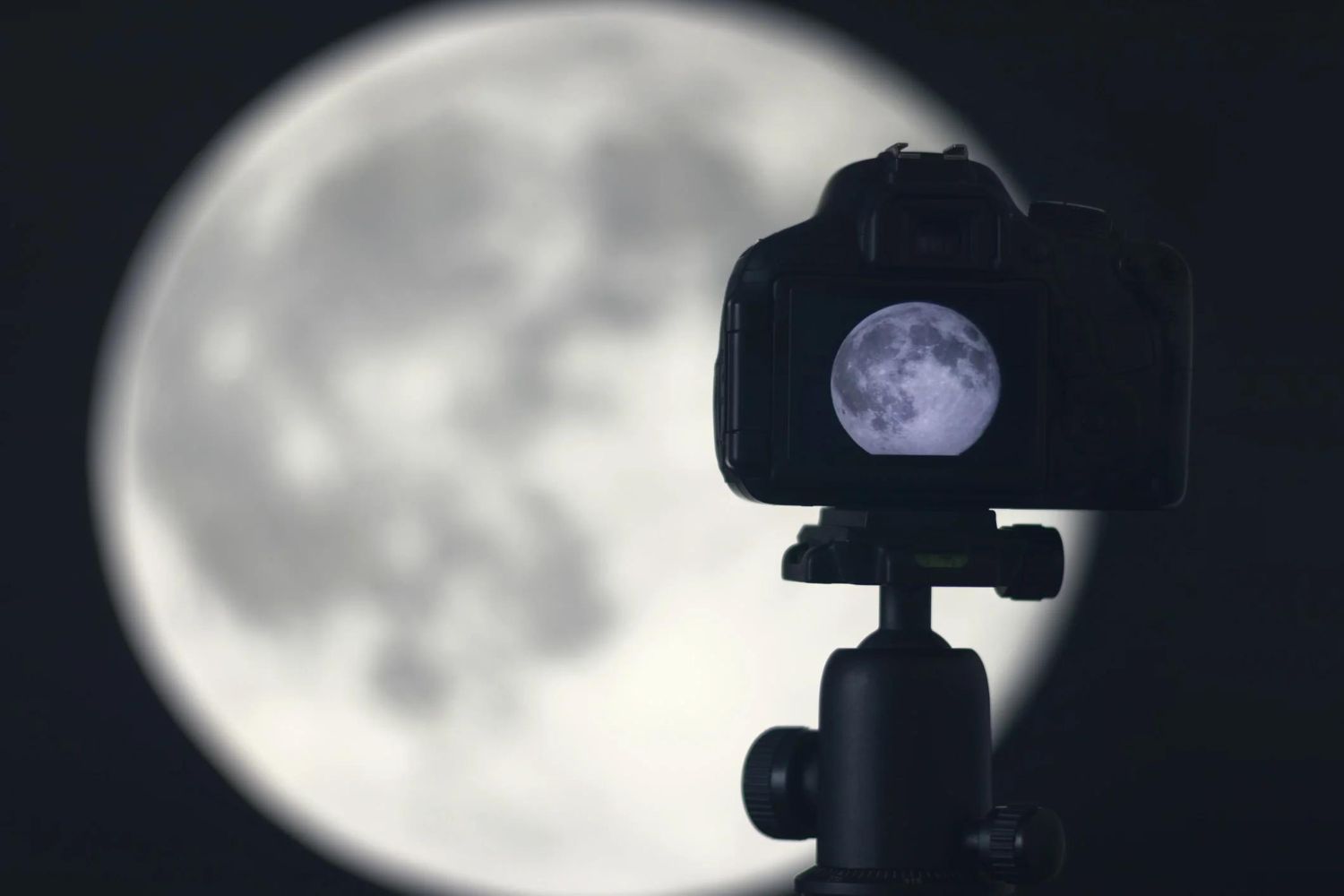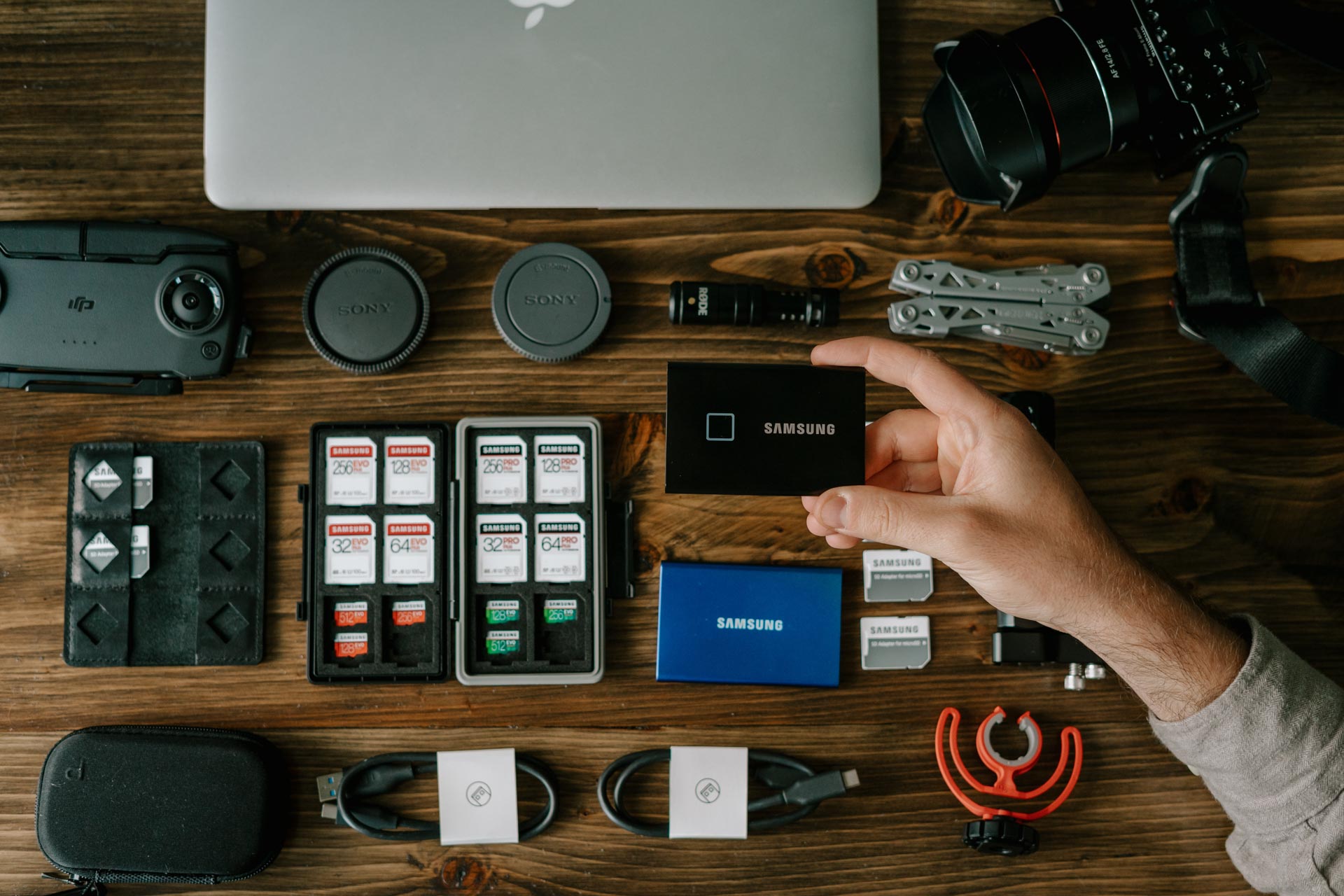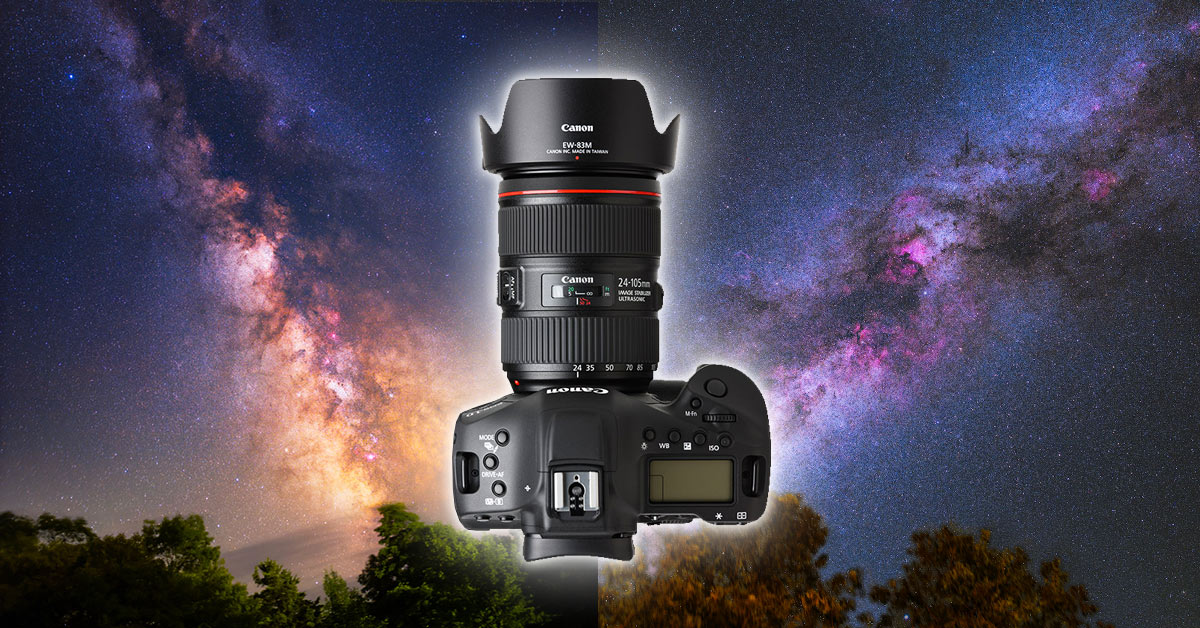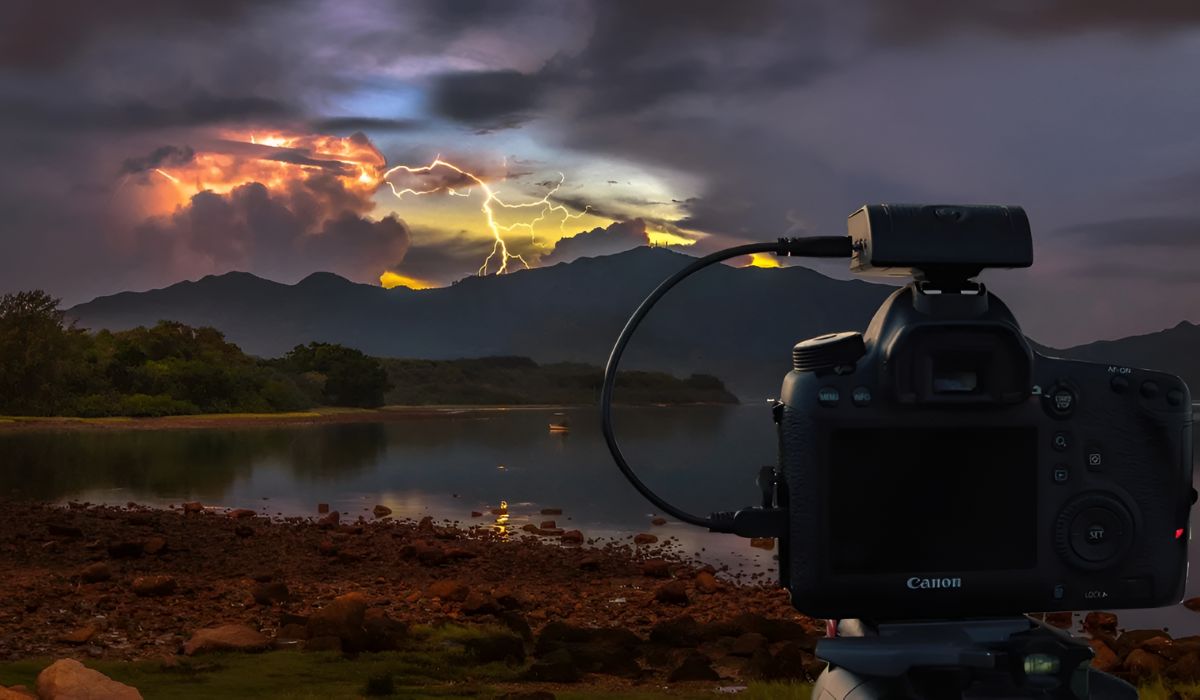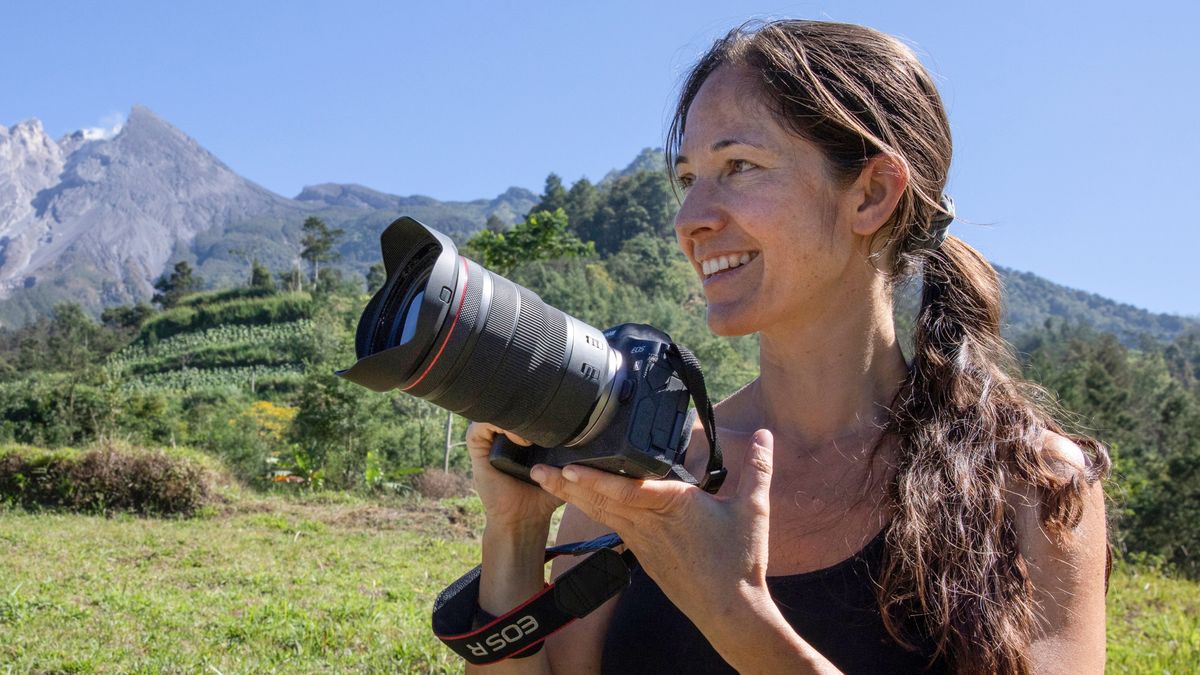Introduction
Night photography can be a captivating and rewarding experience, allowing you to capture stunning images that are often elusive during the daylight hours. With the right techniques and equipment, you can unlock the potential of your DSLR camera to capture the magic of the night. Whether you're drawn to the mesmerizing glow of city lights, the tranquil beauty of starry skies, or the unique ambiance of nocturnal landscapes, mastering the art of night photography opens up a world of creative possibilities.
Capturing compelling images in low-light conditions presents a unique set of challenges and opportunities. The interplay of light and shadow, the vibrant colors of artificial illumination, and the ethereal quality of night scenes offer endless inspiration for photographers. However, the technical aspects of night photography require careful consideration and a nuanced approach to camera settings, equipment, and shooting techniques.
In this guide, we will delve into the intricacies of using a DSLR camera for night photography, equipping you with the knowledge and skills to elevate your nocturnal captures. From understanding the fundamentals of night photography to mastering essential camera settings and techniques, this comprehensive resource will empower you to unleash your creativity and capture the allure of the night with confidence.
Whether you're a seasoned photographer looking to expand your repertoire or a novice eager to explore the enchanting realm of night photography, this guide will provide valuable insights and practical tips to enhance your skills. As you embark on this illuminating journey, prepare to discover the artistry and technical finesse required to harness the magic of the night through the lens of your DSLR camera.
Understanding Night Photography
Night photography presents a unique set of challenges and opportunities that differ significantly from shooting in daylight. Understanding the fundamental principles of capturing images in low-light conditions is essential for achieving remarkable results with your DSLR camera. Whether you’re aiming to photograph urban landscapes bathed in city lights, celestial bodies against a star-studded sky, or the serene beauty of natural settings under the moonlight, comprehending the nuances of night photography is paramount.
One of the defining characteristics of night photography is the interplay between light and darkness. The contrast between illuminated elements and shadowy areas creates a captivating visual dynamic that can infuse your images with drama and intrigue. Mastering the art of balancing these contrasting elements is crucial for creating compelling compositions that evoke the ambiance and mystique of the night.
Furthermore, understanding the behavior of light sources at night is essential for achieving accurate exposures and capturing the desired mood in your photographs. Artificial lighting, such as street lamps, neon signs, and architectural illumination, can imbue scenes with vibrant colors and captivating patterns, while natural sources such as the moon and stars offer a celestial allure that adds a touch of magic to nocturnal landscapes.
Additionally, comprehending the impact of long exposure on night photography is pivotal. Long exposure techniques enable photographers to capture mesmerizing light trails, star trails, and ethereal motion effects, adding a sense of dynamism and artistry to their images. Understanding the principles of long exposure and its creative potential empowers photographers to experiment with different shutter speeds and capture scenes in innovative and captivating ways.
By gaining a deep understanding of the unique characteristics of night photography, including the interplay of light and shadow, the behavior of light sources, and the creative potential of long exposure, photographers can elevate their nocturnal captures to new heights. Armed with this knowledge, you will be well-prepared to explore the technical and artistic intricacies of using a DSLR camera for night photography, unlocking a world of creative expression and visual storytelling under the cover of darkness.
Setting Up Your DSLR Camera for Night Photography
Preparing your DSLR camera for night photography involves a thoughtful and meticulous approach to ensure optimal performance in low-light conditions. From selecting the right lenses to configuring essential camera settings, the setup process plays a pivotal role in capturing stunning nighttime images with clarity and precision.
When venturing into the realm of night photography, choosing the appropriate lens is a critical first step. Opt for a fast lens with a wide aperture, such as a prime lens with a large maximum aperture (e.g., f/1.8 or f/2.8), to maximize light-gathering capabilities and achieve sharp, well-exposed images in dimly lit environments. Additionally, prime lenses are renowned for their superior performance in low-light conditions, making them ideal companions for night photography.
Furthermore, configuring your DSLR camera’s settings to accommodate the challenges of night photography is essential for capturing exceptional images. Start by setting the camera to manual mode, allowing you to have full control over exposure settings such as aperture, shutter speed, and ISO. This level of manual control is indispensable for tailoring the camera’s parameters to suit the specific lighting conditions and creative vision of each nocturnal scene.
Adjusting the white balance settings is equally crucial, as it enables you to accurately capture the ambient colors of the night without succumbing to the dominant hues of artificial lighting. By selecting the appropriate white balance presets or manually adjusting the color temperature, you can ensure that the colors in your night photographs appear natural and true to the scene’s atmospheric characteristics.
Moreover, activating the camera’s long exposure noise reduction feature can significantly enhance the quality of your night images by minimizing digital noise, which is often more pronounced in long exposures. This function helps mitigate the visual artifacts that can detract from the clarity and sharpness of night photographs, ensuring that your images maintain a high level of detail and visual fidelity.
By meticulously setting up your DSLR camera for night photography, from choosing the right lens and configuring manual exposure settings to fine-tuning white balance and noise reduction features, you can lay the groundwork for capturing breathtaking nocturnal images that showcase the captivating allure of the night in all its splendor.
Using the Right Camera Settings
Mastering the intricacies of camera settings is paramount for achieving exceptional results in night photography. With the right combination of aperture, shutter speed, and ISO, you can harness the full potential of your DSLR camera to capture mesmerizing images that encapsulate the enchanting essence of the night.
When delving into night photography, selecting the appropriate aperture setting is crucial for controlling the depth of field and maximizing light intake. Opt for a wide aperture, represented by a low f-number (e.g., f/2.8 or lower), to allow ample light to reach the camera’s sensor, facilitating well-exposed images in low-light conditions. A wide aperture also enables you to achieve a shallow depth of field, accentuating the subject while creating a captivating bokeh effect in the background, adding a touch of artistry to your nocturnal compositions.
Furthermore, mastering the art of balancing shutter speed and ISO is essential for achieving optimal exposure in night photography. Experimenting with longer shutter speeds allows you to capture the subtle nuances of low-light scenes, such as the gentle movement of stars, the luminous trails of passing vehicles, or the ethereal glow of city lights. Additionally, adjusting the ISO setting to a moderate level, typically between ISO 400 and 1600, strikes a balance between capturing sufficient light and minimizing digital noise, ensuring that your night images exhibit remarkable clarity and detail.
Employing the technique of exposure bracketing can further enhance the quality and versatility of your night photographs. By capturing a series of images at varying exposure levels, you can create a range of exposures that cater to different lighting conditions and creative preferences. This approach empowers you to produce a diverse set of images, each with distinct nuances in brightness and tonal range, providing ample flexibility during post-processing and enabling you to select the most compelling rendition of each scene.
Moreover, familiarizing yourself with the concept of bulb mode expands your creative horizons in night photography. This mode allows you to manually control the duration of the exposure, making it ideal for capturing long exposures that extend beyond the limitations of standard shutter speeds. By utilizing bulb mode, you can experiment with extended exposure times, capturing mesmerizing light trails, celestial movements, and other captivating visual phenomena that define the nocturnal landscape.
By mastering the art of using the right camera settings, including aperture, shutter speed, ISO, exposure bracketing, and bulb mode, you can unleash the full creative potential of your DSLR camera and capture the mesmerizing allure of the night with precision and artistry.
Using a Tripod for Stability
When engaging in night photography, the utilization of a tripod is indispensable for achieving stability and precision in your compositions. The inherent challenges of low-light conditions necessitate the need for a reliable support system to ensure that your images are sharp, well-defined, and free from the blurring effects of camera shake. A tripod serves as a steadfast platform, enabling you to capture stunning nightscapes, starry skies, and urban vistas with unparalleled clarity and detail.
One of the primary advantages of using a tripod in night photography is the elimination of camera shake, which can compromise the sharpness and overall quality of images captured at slow shutter speeds. In dimly lit environments, longer exposure times are often required to adequately capture the available light, and handheld shooting becomes impractical due to the increased risk of introducing motion blur into the images. By mounting your DSLR camera on a stable tripod, you can mitigate the effects of camera shake and ensure that your night photographs exhibit exceptional sharpness and detail.
Furthermore, a tripod facilitates precise framing and composition, allowing you to fine-tune your shots with meticulous attention to detail. The ability to make subtle adjustments to the framing of your images without the constraints of handheld shooting empowers you to craft visually compelling compositions and capture the essence of nocturnal scenes with artistic precision. Whether you’re aligning architectural elements in a cityscape, framing celestial bodies in a starry sky, or capturing the serene beauty of a moonlit landscape, the stability provided by a tripod enhances your creative control and elevates the visual impact of your night photography.
Additionally, a tripod enables the seamless execution of long exposure techniques, opening up a realm of creative possibilities in capturing the mesmerizing effects of time and motion in night scenes. Whether you’re aiming to capture captivating light trails, ethereal water reflections, or the graceful movement of celestial bodies, the stability and control afforded by a tripod are essential for achieving stunning long exposure effects with precision and finesse.
By embracing the use of a tripod for stability in night photography, you equip yourself with a foundational tool that enhances the technical precision, creative freedom, and visual impact of your nocturnal captures. The stability and control provided by a tripod empower you to unleash your creativity, capture the enchanting allure of the night, and produce images that resonate with clarity, detail, and artistic finesse.
Using Remote Shutter Release
Integrating a remote shutter release into your night photography toolkit offers a range of benefits that enhance your creative control and technical precision when capturing nocturnal scenes. This invaluable accessory provides photographers with the ability to trigger the camera’s shutter without physically touching the camera, minimizing the risk of introducing camera shake and ensuring the utmost sharpness and clarity in their night images.
One of the primary advantages of using a remote shutter release in night photography is the mitigation of camera shake, particularly when employing long exposure techniques. By remotely triggering the shutter, photographers eliminate the potential for inadvertent movement or vibration caused by manually pressing the camera’s shutter button. This results in images that exhibit exceptional sharpness and detail, free from the blurring effects that can detract from the visual impact of long exposure captures in low-light environments.
Moreover, a remote shutter release enables photographers to execute precise and timed exposures with ease, especially when capturing phenomena such as star trails, celestial movements, or light painting. The ability to initiate the exposure at the exact moment desired, and to conclude it with equal precision, empowers photographers to achieve consistent and compelling results in their long exposure endeavors, capturing the mesmerizing effects of time and motion with unparalleled accuracy.
Additionally, the use of a remote shutter release facilitates the implementation of bulb mode, a feature that extends the duration of the exposure beyond the limits of standard shutter speeds. When utilizing bulb mode for extended exposures, the remote shutter release becomes an indispensable tool for controlling the precise timing of the exposure, allowing photographers to capture captivating light trails, celestial phenomena, and other dynamic elements of the nocturnal landscape with meticulous precision and artistry.
Furthermore, incorporating a remote shutter release into your night photography workflow enhances your creative freedom and technical finesse, enabling you to explore innovative shooting techniques and capture the ethereal beauty of the night with unparalleled control and precision. By leveraging the capabilities of a remote shutter release, you elevate the quality and visual impact of your nocturnal captures, ensuring that your images resonate with exceptional sharpness, clarity, and artistic expression.
Focusing in Low Light Conditions
Mastering the art of achieving precise focus in low-light conditions is a crucial aspect of night photography, as the diminished ambient light presents unique challenges for capturing sharp and well-defined images. Navigating the complexities of focusing in the dark requires a nuanced approach and the utilization of specialized techniques to ensure that your nocturnal captures exhibit exceptional clarity and detail.
When faced with low-light environments, traditional autofocus systems may struggle to accurately lock onto subjects, leading to frustrating moments of missed focus and compromised image quality. To overcome this challenge, transitioning to manual focus becomes essential in night photography, providing photographers with the tactile control and precision needed to achieve sharp and well-defined images in dimly lit scenes.
Furthermore, utilizing the magnification feature on your camera’s live view screen can significantly aid in achieving precise manual focus in low-light conditions. By magnifying the view of the scene, photographers can meticulously fine-tune the focus on their desired subjects, ensuring that critical details are rendered with exceptional sharpness and clarity, even in the absence of ample ambient light.
Another effective technique for achieving accurate focus in low-light environments involves utilizing the camera’s depth of field preview function. By engaging the depth of field preview, photographers can assess the sharpness and depth of focus in real time, allowing them to make informed adjustments to the focus position and ensure that their subjects are rendered with optimal clarity and detail, even in challenging lighting conditions.
Additionally, the use of manual focus assist tools, such as focus peaking and focus magnification, further enhances the precision and reliability of manual focusing in low-light scenarios. These features provide visual indicators and enhanced visibility of in-focus areas, empowering photographers to confidently achieve precise focus on their subjects, even when contending with the limitations of low ambient light.
By embracing the specialized techniques and tools available for focusing in low-light conditions, photographers can elevate the quality and visual impact of their night photography, ensuring that their images resonate with exceptional sharpness, clarity, and attention to detail. Navigating the intricacies of focusing in the dark empowers photographers to capture the captivating allure of the night with precision and artistry, producing images that showcase the enchanting beauty of nocturnal landscapes with unparalleled clarity and visual impact.
Dealing with Noise in Night Photography
Managing digital noise is a critical consideration in night photography, as the extended exposure times and elevated ISO settings commonly used in low-light conditions can result in visible noise artifacts that detract from the overall quality of the images. Understanding and effectively addressing noise-related challenges is essential for ensuring that your nocturnal captures exhibit remarkable clarity, detail, and visual fidelity.
One of the primary strategies for mitigating noise in night photography involves optimizing the camera’s ISO settings to strike a balance between capturing sufficient light and minimizing digital noise. Selecting a moderate ISO setting, typically between ISO 400 and 1600, enables photographers to achieve adequate light sensitivity without excessively amplifying the noise levels, resulting in images that exhibit improved clarity and reduced noise artifacts.
Additionally, leveraging the capabilities of modern DSLR cameras with advanced noise reduction features can significantly enhance the quality of night images. Activating in-camera noise reduction functions, particularly long exposure noise reduction, facilitates the automatic suppression of digital noise during extended exposures, resulting in cleaner and more visually appealing images with reduced noise interference.
Furthermore, post-processing software and techniques offer valuable tools for addressing noise in night photography. Utilizing specialized noise reduction algorithms and software applications empowers photographers to refine the quality of their images, selectively reducing noise artifacts while preserving crucial details and textures, resulting in visually pleasing and technically superior night photographs.
Embracing the creative potential of long exposure techniques in night photography necessitates a nuanced approach to managing noise. By carefully monitoring exposure times and employing noise reduction strategies, photographers can capture compelling long exposure images with minimized noise interference, ensuring that the mesmerizing effects of time and motion in the nocturnal landscape are rendered with exceptional clarity and visual impact.
By navigating the intricacies of noise management in night photography, photographers can elevate the quality and visual appeal of their nocturnal captures, ensuring that their images resonate with exceptional clarity, detail, and technical finesse. Effectively addressing noise-related challenges empowers photographers to capture the enchanting allure of the night with precision and artistry, producing images that showcase the captivating beauty of nocturnal landscapes with unparalleled visual fidelity.
Experimenting with Long Exposure
Long exposure photography in nocturnal settings offers an enchanting avenue for capturing the mesmerizing interplay of light, motion, and time, allowing photographers to craft evocative and visually compelling images that transcend the constraints of conventional shutter speeds. Embracing the creative potential of long exposure techniques in night photography opens a realm of artistic expression and visual storytelling, enabling photographers to capture the ethereal beauty of the night with captivating dynamism and allure.
One of the defining characteristics of long exposure photography is the ability to render the passage of time and motion in a single frame, creating captivating visual effects that are inherently elusive in standard shutter speeds. Whether capturing the graceful trails of celestial bodies, the luminous streaks of passing vehicles, or the serene flow of water under moonlight, long exposure techniques imbue nocturnal scenes with a sense of dynamism and artistry, elevating the visual impact of the images and evoking a profound sense of motion and energy.
Experimenting with long exposure also allows photographers to unveil the hidden nuances of nocturnal landscapes, unveiling intricate details and atmospheric elements that are often obscured in standard exposure durations. By extending the duration of the exposure, photographers can reveal the subtle textures of the night sky, the gentle movement of foliage in the breeze, and the captivating interplay of light and shadow, creating images that resonate with a sense of depth, tranquility, and immersive beauty.
Furthermore, long exposure techniques enable photographers to capture mesmerizing light trails that epitomize the kinetic energy and vibrancy of urban environments at night. Whether documenting the bustling city streets adorned with streaks of car lights or the radiant patterns of illuminated architecture, long exposure photography transforms nocturnal cityscapes into dynamic and visually captivating compositions, showcasing the pulsating rhythm and vitality of urban life after dark.
Embracing the creative potential of long exposure techniques in night photography empowers photographers to push the boundaries of visual expression, capturing the enchanting allure of the night with precision and artistry. By experimenting with extended exposure durations, photographers can produce images that transcend the ordinary, unveiling the evocative beauty and captivating dynamism of nocturnal landscapes with unparalleled creativity and visual impact.
Conclusion
Embarking on the captivating journey of night photography with a DSLR camera unveils a realm of creative exploration and technical finesse, offering photographers the opportunity to capture the enchanting allure of the night with precision and artistry. From mastering essential camera settings to harnessing the creative potential of long exposure techniques, the intricacies of night photography present a myriad of opportunities for visual storytelling and expressive imagery.
Understanding the unique characteristics of night photography, including the interplay of light and shadow, the behavior of light sources, and the creative potential of long exposure, empowers photographers to elevate their nocturnal captures to new heights. Armed with this knowledge, photographers can explore the technical and artistic intricacies of using a DSLR camera for night photography, unlocking a world of creative expression and visual storytelling under the cover of darkness.
By meticulously setting up DSLR cameras for night photography, from choosing the right lens and configuring manual exposure settings to fine-tuning white balance and noise reduction features, photographers lay the groundwork for capturing breathtaking nocturnal images that showcase the captivating allure of the night in all its splendor.
Utilizing essential accessories such as tripods and remote shutter releases enhances stability, precision, and creative control in night photography, ensuring that images resonate with exceptional sharpness, clarity, and visual impact. Additionally, navigating the complexities of focusing in low-light conditions and effectively managing noise artifacts empowers photographers to capture the enchanting beauty of nocturnal landscapes with unparalleled technical finesse and visual fidelity.
Experimenting with long exposure techniques in night photography opens a realm of artistic expression and visual storytelling, enabling photographers to capture the ethereal beauty of the night with captivating dynamism and allure. By embracing the creative potential of long exposure, photographers unveil the hidden nuances of nocturnal landscapes, crafting evocative and visually compelling images that transcend the constraints of conventional shutter speeds.
As photographers venture into the captivating realm of night photography with a DSLR camera, they embark on a transformative and illuminating journey, discovering the artistry and technical finesse required to harness the magic of the night through the lens. With each nocturnal capture, photographers weave a narrative of enchantment and visual poetry, capturing the essence of the night in images that resonate with depth, emotion, and timeless allure.







